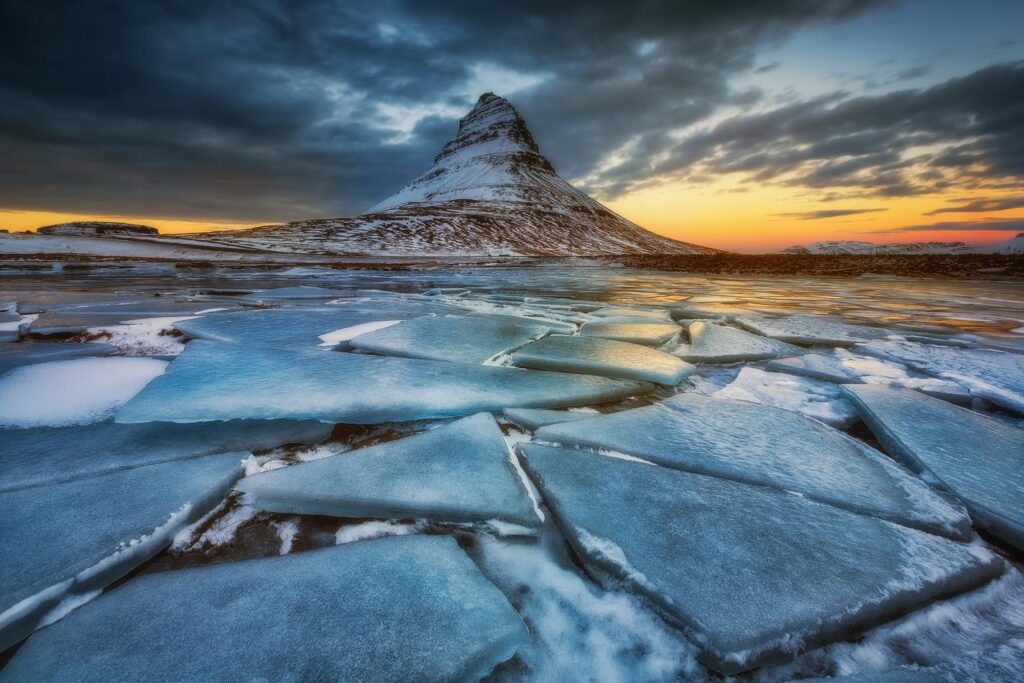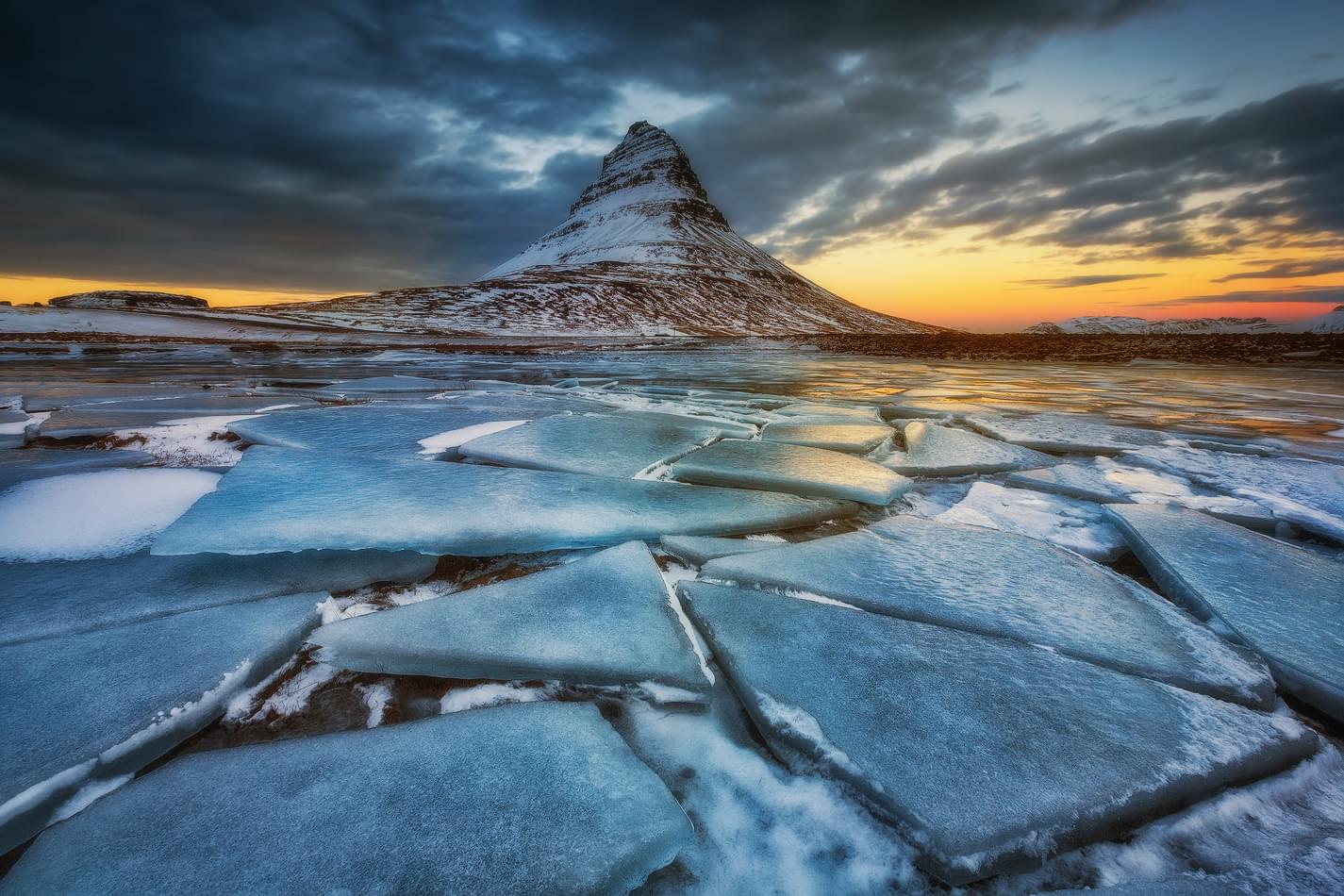
Capturing the Untamed Beauty: A Guide to Iceland Landscape Photography
Iceland, a land forged by fire and ice, presents a unique and compelling challenge for landscape photographers. Its dramatic vistas, ethereal light, and ever-changing weather patterns offer a canvas unlike any other on Earth. This guide delves into the essential aspects of Iceland landscape photography, providing insights for both seasoned professionals and aspiring enthusiasts looking to capture the raw, untamed beauty of this Nordic island nation.
Planning Your Iceland Photography Trip
Successful Iceland landscape photography begins long before you arrive on its shores. Careful planning is crucial to maximize your time and capture the best possible images.
Best Time to Visit
The ideal time to visit Iceland depends on your specific photographic goals:
- Summer (June-August): Long daylight hours, including the midnight sun, provide ample opportunity for shooting. The weather is generally milder, making travel easier. This is ideal for capturing lush green landscapes and wildflowers.
- Autumn (September-October): The landscape transforms into a tapestry of autumnal colors, offering stunning photographic opportunities. The Northern Lights season begins, adding another dimension to your images.
- Winter (November-March): The Northern Lights are at their most visible during the dark winter months. Snow-covered landscapes and frozen waterfalls create a magical atmosphere. Be prepared for challenging weather conditions and limited daylight hours.
- Spring (April-May): As the snow melts, waterfalls swell, and the landscape awakens. This is a good time to avoid the peak season crowds while still enjoying relatively mild weather.
Essential Gear for Iceland Landscape Photography
Iceland’s unpredictable weather demands robust and reliable equipment. Here’s a checklist of essential gear:
- Camera: A full-frame DSLR or mirrorless camera is recommended for optimal image quality and dynamic range.
- Lenses: A wide-angle lens (16-35mm) is essential for capturing the vast landscapes. A telephoto lens (70-200mm or longer) is useful for isolating specific elements and compressing perspective. A mid-range zoom lens (24-70mm) provides versatility.
- Tripod: A sturdy tripod is crucial for sharp images, especially in low light or windy conditions.
- Filters: A polarizing filter reduces glare and enhances colors. Neutral density (ND) filters allow for long exposures, creating motion blur in waterfalls and clouds. Graduated neutral density (GND) filters balance the exposure between the sky and the foreground.
- Rain Gear: Protect your camera and lenses from rain, snow, and sea spray.
- Clothing: Dress in layers to adapt to changing weather conditions. Waterproof and windproof outerwear is essential.
- Hiking Boots: Sturdy hiking boots are necessary for navigating uneven terrain.
- Headlamp: Useful for shooting in low light or at night.
- Microfiber Cloths: To clean your lenses from water and dust.
Choosing Your Locations
Iceland boasts a plethora of stunning locations for Iceland landscape photography. Here are a few highlights:
- The South Coast: Home to iconic waterfalls like Seljalandsfoss and Skógafoss, black sand beaches like Reynisfjara, and the Jökulsárlón glacier lagoon.
- The Snæfellsnes Peninsula: Often referred to as “Miniature Iceland,” this peninsula offers a diverse range of landscapes, including Kirkjufell mountain, black pebble beaches, and lava fields.
- The Highlands: Accessible only during the summer months, the Highlands offer a raw and remote wilderness with colorful rhyolite mountains, geothermal areas, and glacial rivers.
- The Westfjords: A remote and rugged region with dramatic fjords, towering cliffs, and charming fishing villages.
- The Northern Lights: Visible throughout Iceland during the winter months, the Northern Lights provide a breathtaking spectacle.
Mastering the Art of Iceland Landscape Photography
Beyond the right gear and locations, mastering the art of Iceland landscape photography requires a keen eye for composition, light, and timing.
Composition Techniques
Composition is key to creating compelling landscape photographs. Consider these techniques:
- Rule of Thirds: Divide the frame into nine equal parts and place key elements along the lines or at the intersections.
- Leading Lines: Use lines to guide the viewer’s eye through the scene.
- Foreground Interest: Include interesting elements in the foreground to add depth and scale.
- Symmetry and Patterns: Look for symmetrical compositions or repeating patterns in the landscape.
- Negative Space: Use negative space to create a sense of balance and draw attention to the subject.
Working with Light
Light is the lifeblood of photography. Pay attention to the quality and direction of light to create mood and atmosphere.
- Golden Hour: The hour after sunrise and the hour before sunset provide warm, soft light that is ideal for landscape photography.
- Blue Hour: The hour before sunrise and the hour after sunset offer cool, soft light that is perfect for capturing twilight scenes.
- Overcast Skies: Overcast skies can provide soft, even light that is ideal for photographing details in the landscape.
- Harsh Sunlight: Avoid shooting in harsh sunlight, as it can create harsh shadows and blown-out highlights. If you must shoot in harsh sunlight, try using a polarizing filter to reduce glare and enhance colors.
Capturing the Northern Lights
Photographing the Northern Lights is a challenging but rewarding experience. Here are some tips:
- Find a Dark Location: Get away from city lights to minimize light pollution.
- Use a Wide-Angle Lens: Capture as much of the sky as possible.
- Use a Fast Aperture: Allow as much light as possible to enter the lens (f/2.8 or faster).
- Use a High ISO: Increase the camera’s sensitivity to light (ISO 1600 or higher).
- Use a Long Exposure: Use a long exposure (15-30 seconds) to capture the movement of the Northern Lights.
- Use a Tripod: Keep the camera steady during the long exposure.
- Check the Aurora Forecast: Use websites and apps to track the Aurora Borealis activity.
Post-Processing Your Iceland Landscape Photos
Post-processing is an essential part of the Iceland landscape photography workflow. Use software like Adobe Lightroom or Photoshop to enhance your images.
Basic Adjustments
- Exposure: Adjust the overall brightness of the image.
- Contrast: Increase the contrast to add depth and dimension.
- Highlights and Shadows: Adjust the highlights and shadows to recover details in the bright and dark areas of the image.
- White Balance: Adjust the white balance to correct color casts.
- Clarity and Vibrance: Add clarity to enhance details and vibrance to boost colors.
Advanced Techniques
- Local Adjustments: Use local adjustments to selectively edit specific areas of the image.
- Noise Reduction: Reduce noise in the image, especially in high-ISO shots.
- Sharpening: Sharpen the image to enhance details.
- Color Grading: Adjust the colors to create a specific mood or atmosphere.
Ethical Considerations for Iceland Landscape Photography
As a responsible photographer, it’s important to minimize your impact on the environment. Stay on marked trails, avoid disturbing wildlife, and pack out all your trash. Respect the local culture and traditions.
Conclusion
Iceland landscape photography offers a unique opportunity to capture the raw beauty and dramatic landscapes of this extraordinary island nation. With careful planning, the right gear, and a passion for capturing the perfect light, you can create stunning images that will last a lifetime. Remember to respect the environment and leave no trace behind. [See also: Best Time to Photograph Waterfalls] [See also: Essential Gear for Landscape Photography] [See also: Composition Techniques for Stunning Photos]
The allure of Iceland landscape photography lies not just in the stunning visuals, but in the experience of connecting with nature on a profound level. The unpredictable weather, the vastness of the landscapes, and the sheer power of the natural forces at play create a sense of awe and wonder that is truly unforgettable. So, pack your bags, charge your batteries, and prepare to be captivated by the magic of Iceland.

